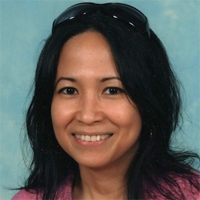“I do not demand equal pay for any woman, save those who do equal work in value. Scorn to be coddled by your employers; make them understand that you are in their service as workers, not as women.” - Susan B. Anthony
Born in Adams, Massachusetts in 1820, Susan B. Anthony, became a prominent figure in the Women's suffrage movement. However, before that she and her family were slavery abolitionists. They were a devout Quaker family and she developed strong moral character at an early age. This moral character would lead her to prominence and fame in the mid-1800's.
In 1826, the Anthony family moved to Battenville, New York and Susan B. Anthony was sent to a Quaker school in Pennsylvania. She stayed at the school until the late 1830's when she returned home to help her family with money, as her father's had failed. She took a job as a teacher until the mid 1840's when the family moved to Rochester, New York. It was around this time that they became involved in the Abolitionists Movement, to help end slavery. Fredrick Douglass was one famed abolitionist who used the Anthony farm for a meeting place.
In 1851, Susan B. Anthony met Elizabeth Cady Stanton, another woman who was involved with the abolitionist movement. Susan B. Anthony had now fully begun to dedicate herself to many social issues and soon became involved in the temperance movement in order to try and stop the making and selling of alcohol. Anthony, because she was a woman, was not allowed to speak at a temperance rally that she attended, so she along with, Elizabeth Cady Stanton, formed the New York State Women's Temperance Society.
However, Anthony realized that if she wanted women to be successful in politics, they would first need the right to be able to vote in elections. So, along with all the other social causes that they are dedicated to, Susan B. Anthony and Elizabeth Cady Stanton became involved in women's suffrage so they formed the New York State Women's Rights Committee and began to travel a lot, getting people to sign petitions for women to have the right to vote and to be able to own property.
In 1872, she illegally voted in an election and was arrested. After a trial, she was found guilty and fined one hundred dollars; a fine she never did pay. She worked the rest of her life in the women's suffrage movement and even met with President Theodore Roosevelt in 1905 to try and get an amendment passed to give the women a right to vote.
She wouldn't live to see her work and her dream come true, as she died a year later on this day in history, March 13, 1906.

Printer Friendly Version

